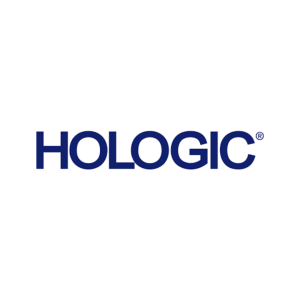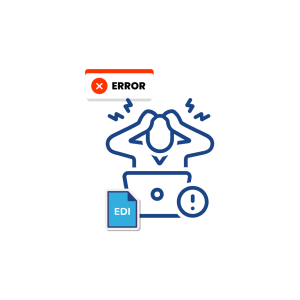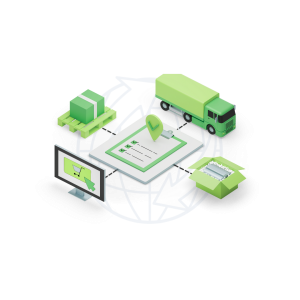Introduction to EDI in Healthcare
Healthcare EDI provides the system to securely exchange EDI documents between healthcare institutions, care providers, and patients. The healthcare industry deals with enormous amounts of healthcare data every day. Which includes patient medical records, medication data, emergency services records, and insurance claims.
Interoperability is the key to success for the healthcare industry with constant changes to regulatory requirements healthcare companies, vendors, suppliers, and care providers need to be EDI compliant before starting to exchange EDI documents. Whether it is insurance claims, medical billing, operational processes, or data management, EDI will allow the complete supply chain to navigate from one point to another point seamlessly.
As per the Grand View Research report the healthcare EDI market was valued at USD 4.41 billion in 2022 and is anticipated to grow at a CAGR of 9.6% from 2023 to 2030.
Key Takeaways
- EDI ensures secure and standardized communication, making healthcare data management faster and more reliable.
- EDI technology enhances operational efficiency by reducing manual processes and paperwork while also minimizing errors.
- Common transactions using EDI include submitting healthcare claims (EDI 837), receiving payment and remittance advice (EDI 835), checking patient eligibility (EDI 270/271), and managing claims status (EDI 276/277
- Despite challenges like integrating EDI into legacy systems and ensuring data standardization, the future of EDI in healthcare looks promising. As the industry becomes more digital, EDI will likely evolve to incorporate advanced technologies such as AI and machine learning, further improving data accuracy and operational efficiency.
How EDI is Used in the Healthcare Industry?
EDI automates many electronic data interchange (EDI) documents thus providing a better caregiving experience while handling complex and greater loads.
- Mapping, Translation, and Documentation – Generate healthcare documents based on EDI standards, and then a request for reimbursement is made. This procedure requires the mapping of documents, which means transforming documents into the set EDI format.
- Document Validation and Testing Procedures – In this step, the documents are tested for accuracy and validated to ensure that all necessary information is present. This testing phase reduces the possibility of denied or rejected claims
- File Transfer – The documents are then sent across a secure platform from one entity to another. All transfers are assured to be encrypted, authentic, and secure. Compliance and regulatory rules ensure that only relevant parties receive this information
- Document Integration – The recipients are then required to translate the incoming documents into relevant formats and forward them to the specific route.
12 Benefits of EDI in the Healthcare Industry
- Automates order processing and inventory management for efficient performance
- Reduce manual systems through medical EDI
- Automated transfer of data between providers and payers through EDI payment platforms
- Faster turnaround of information, reduced expenses, and delays
- Set formats for transactions, claims, eligibility, status, and payments
- Clear and systematic transaction flow
- The electronic format allows claims to be sent and received on the same day
- Eligibility checks are promptly executed, and response time is much lower
- The interoperability feature of EDI in medical billing allows information exchange with multiple payers at one time for faster transaction processes
- Using EDI in the healthcare industry, it greatly benefits the organization by reducing administrative expenses on paperwork, supplies, and postage costs
- Access to patient information is another powerful tool for efficiency and faster processes
- EDI documents and medical information exchanged secure protocols like AS2 and SFTP help ensure data security
List of EDI X12 Transaction Codes Used in the Healthcare Industry
EDI X12 Transaction Number | EDI Transaction Name / Document Type |
EDI 100 | Insurance Plan Description |
EDI 112 | Property Damage Report |
EDI 148 | Report of Injury, Illness or Incident |
EDI 186 | Insurance Underwriting Requirements Reporting |
EDI 252 | Insurance Producer Administration |
EDI 255 | Underwriting Information Services |
EDI 267 | Individual Life, Annuity and Disability Application |
EDI 268 | Annuity Activity |
EDI 270 | Eligibility, Coverage or Benefit Inquiry |
EDI 271 | Eligibility, Coverage or Benefit Information |
EDI 272 | Property and Casualty Loss Notification |
EDI 273 | Insurance/Annuity Application Status |
EDI 274 | Health Care Provider Information |
EDI 275 | Patient Information |
EDI 276 | Health Care Claim Status Request |
EDI 277 | Health Care Claim Status Notification |
EDI 278 | Health Care Services Insurance/Benefit Review Information |
EDI 288 | Health Care Services Insurance/Benefit Review Information |
EDI 362 | Cargo Insurance Advice of Shipment |
EDI 500 | Medical Event Reporting |
EDI 820 | Premium Payments |
EDI 834 | Benefit Enrollment and Maintenance |
EDI 835 | Health Care Claim Payment/Advice |
EDI 837 | Health Care Claim |
EDI 924 | Loss or Damage Claim – Motor Vehicle |
EDI 925 | Claim Tracer |
EDI 926 | Claim Status Report and Tracer Reply |
EDI 928 | Automotive Inspection Detail |
Ultimate Guide To
Healthcare EDI
In this comprehensive guide to healthcare EDI, we will explore the importance of EDI in the healthcare industry, its benefits, and how it can optimize healthcare operations and improve care
Conclusion
The implementation of Electronic Data Interchange (EDI) in the healthcare industry marks a transformative shift towards efficient and standardized communication. By facilitating the electronic exchange of health-related information, EDI contributes to improved accuracy, reduced administrative costs, and enhanced patient care. As the healthcare sector embraces digital transformation, the adoption of EDI continues to play a pivotal role in optimizing processes and promoting interoperability among healthcare providers, payers, and other stakeholders.
Ready to find out more about Commport EDI Solutions for Healthcare Industry?
Need Help? Download: EDI Buyers Guide
Unlock the full potential of your supply chain with our comprehensive EDI Buyer's Guide — your first step towards seamless, efficient, and error-free transactions
Frequently Asked Questions
EDI in the healthcare industry streamlines the exchange of health-related information electronically. It improves the accuracy of data, accelerates administrative processes, and enhances collaboration among healthcare entities, leading to improved patient care.
EDI benefits healthcare providers by automating tasks like claims processing, billing, and patient information exchange. This reduces paperwork, minimizes errors, and allows healthcare professionals to focus more on patient care.
Yes, EDI compliance is often required in the healthcare industry. Adherence to standards. EDI ensures the secure and standardized exchange of healthcare information.
Yes, EDI facilitates the seamless exchange of patient records between different healthcare systems. It ensures the standardized transfer of data, promoting interoperability and continuity of care across diverse healthcare environments.
EDI contributes to cost reduction in the healthcare sector by automating manual processes, reducing paperwork, and minimizing errors. The streamlined communication it enables leads to more efficient operations and decreased administrative expenses.





